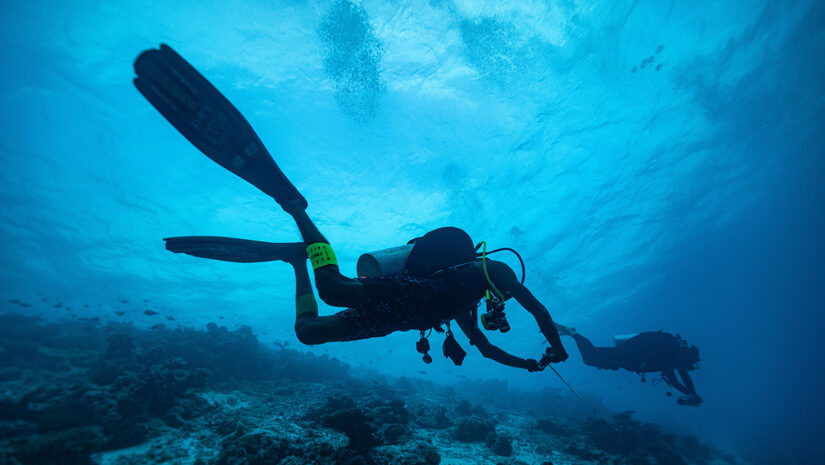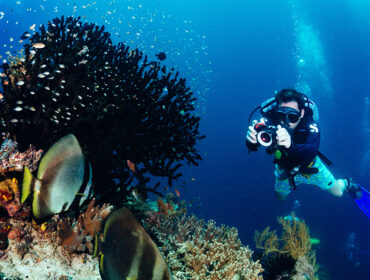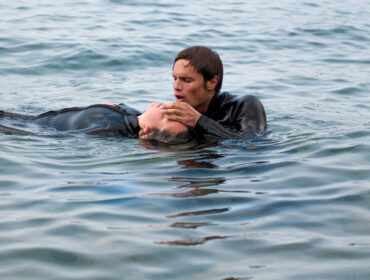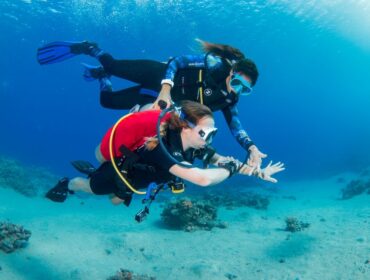Every scuba diver starts with the basic equipment: a mask, snorkel, fins, buoyancy control device (BCD), regulators, a wetsuit, and a tank. These form the foundation of any dive setup, ensuring that divers can breathe, move, and stay comfortable underwater. However, as divers progress beyond the beginner level and start exploring deeper, longer, or more complex dives, additional gear becomes necessary to enhance safety, efficiency, and overall diving experience. Here are some of the essential pieces of dive gear that every advanced diver should consider adding to their dive bag.
1. Dive Computer
A dive computer is one of the most valuable tools for any advanced diver. While beginner divers may rely on dive tables, a dive computer provides real-time data on depth, bottom time, ascent rate, and no-decompression limits. Many advanced dive computers also feature gas integration, allowing divers to monitor their tank pressure and remaining dive time more effectively. Some models even support multiple gas mixes, making them essential dive gear for deep or technical diving.
2. Redundant Air Source (Pony Bottle or Spare Air)
Advanced divers often venture deeper or dive in environments where an immediate emergency ascent is not an option. A redundant air source, such as a pony bottle or Spare Air system, provides an independent backup air supply in case of primary regulator failure or an out-of-air emergency. This is particularly important for deep dives, wreck dives, and solo diving.
3. DSMB (Delayed Surface Marker Buoy) and Reel
A DSMB is an essential safety tool for advanced divers, particularly those diving in areas with boat traffic or strong currents. It allows divers to signal their position to boats while ascending and can be used to mark a location for surface support. When deployed from depth using a reel, a DSMB helps ensure a safe ascent by providing a visual reference and reducing the risk of being carried away by currents.
4. Backup Dive Light and Primary Torch
For night diving, wreck penetration, or deep dives where natural light fades, a powerful primary dive torch is crucial. Advanced divers should also carry a backup dive light in case the primary fails. Modern LED dive lights offer long battery life and bright, focused beams that improve visibility and help identify marine life and hazards in low-light conditions.
5. Cutting Tool (Dive Knife or Line Cutter)
A cutting tool is a must-have for any advanced diver, especially those exploring wrecks, kelp forests, or areas with fishing nets. Entanglement can happen unexpectedly, and having a dive knife or line cutter allows divers to quickly free themselves or their buddies. Many divers opt for compact, rust-resistant titanium or stainless steel knives that can be easily mounted on a BCD or hose.
6. Compass and Navigation Slate
Navigation becomes increasingly important as divers progress to more challenging dive sites. A reliable underwater compass helps maintain orientation, while a waterproof navigation slate allows divers to jot down bearings, planned routes, or notes about dive plans. This is particularly useful for wreck penetration, cave diving, or any site where visibility may be limited.
7. Wreck and Cave Diving Reel
For those interested in wreck or cavern diving, a reel is an essential tool for maintaining a continuous guideline to the exit. It allows divers to navigate safely within overhead environments, reducing the risk of disorientation. Reels also come in handy for deploying DSMBs or performing search and recovery operations.
8. High-Quality Dive Hood and Gloves
Advanced divers often venture into colder waters, where heat loss can become a significant issue. A well-fitted dive hood and gloves help retain body heat, making long dives more comfortable. For technical divers using drysuits, dry gloves provide additional warmth while maintaining dexterity.
9. Tank Bangers or Signaling Devices
Underwater communication can be challenging, especially in strong currents or low-visibility conditions. A tank banger, whistle, or electronic signaling device helps advanced divers get their buddy’s attention quickly without unnecessary hand signals. Some divers also carry an audible surface signaling device, such as an air horn, to call for help if needed.
10. Enriched Air (Nitrox) Capability
While not a physical piece of gear, obtaining a Nitrox certification and using enriched air tanks is a game-changer for advanced divers. Nitrox allows for longer bottom times by reducing nitrogen absorption, making it an essential tool for repetitive or deep dives. Most modern dive computers support Nitrox, but divers must ensure their regulators and tanks are compatible.
Final Thoughts
As divers gain experience and confidence underwater, expanding their gear setup is essential for safety, efficiency, and enjoyment. Investing in high-quality advanced dive gear enables divers to tackle new challenges, from deep wrecks to strong currents, with greater confidence and preparedness. Whether it’s a reliable dive computer, a redundant air source, or a navigation tool, each piece of advanced gear plays a crucial role in enhancing the overall diving experience. If you’re an experienced diver looking to take your underwater adventures to the next level, consider upgrading your kit with these essential dive gear.






